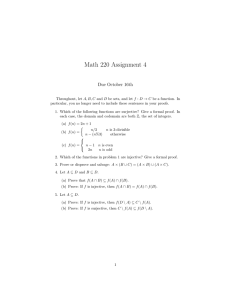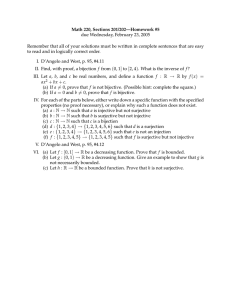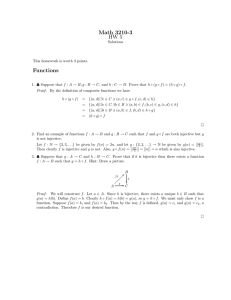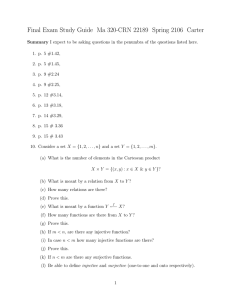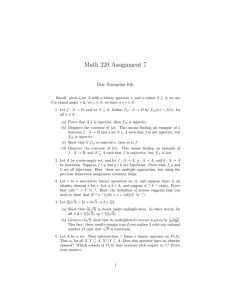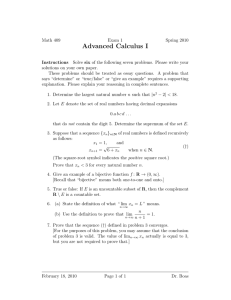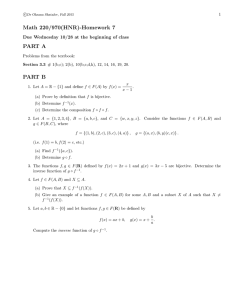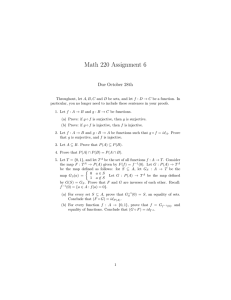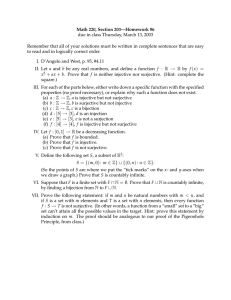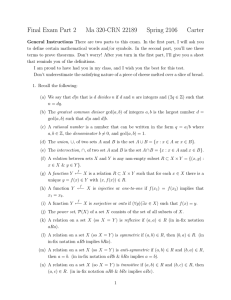Mathematics 220 Workshop 2
advertisement
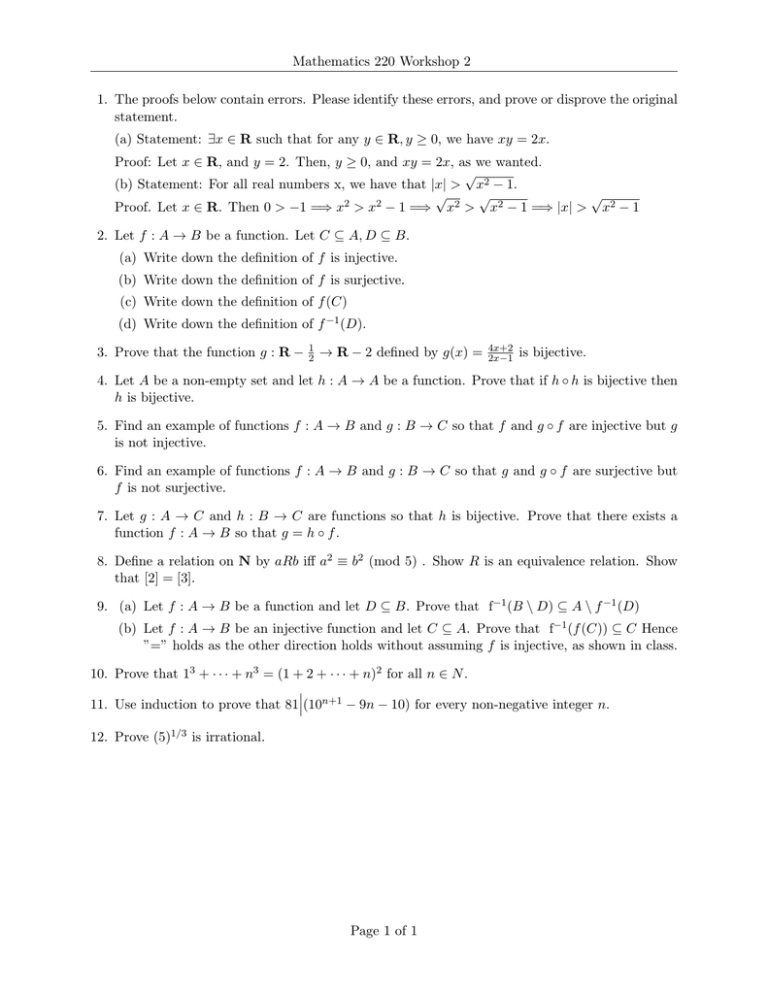
Mathematics 220 Workshop 2 1. The proofs below contain errors. Please identify these errors, and prove or disprove the original statement. (a) Statement: ∃x ∈ R such that for any y ∈ R, y ≥ 0, we have xy = 2x. Proof: Let x ∈ R, and y = 2. Then, y ≥ 0, and xy = 2x, as we wanted. √ (b) Statement: For all real numbers x, we have that |x| > x2 − 1. √ √ √ Proof. Let x ∈ R. Then 0 > −1 =⇒ x2 > x2 − 1 =⇒ x2 > x2 − 1 =⇒ |x| > x2 − 1 2. Let f : A → B be a function. Let C ⊆ A, D ⊆ B. (a) Write down the definition of f is injective. (b) Write down the definition of f is surjective. (c) Write down the definition of f (C) (d) Write down the definition of f −1 (D). 3. Prove that the function g : R − 1 2 → R − 2 defined by g(x) = 4x+2 2x−1 is bijective. 4. Let A be a non-empty set and let h : A → A be a function. Prove that if h ◦ h is bijective then h is bijective. 5. Find an example of functions f : A → B and g : B → C so that f and g ◦ f are injective but g is not injective. 6. Find an example of functions f : A → B and g : B → C so that g and g ◦ f are surjective but f is not surjective. 7. Let g : A → C and h : B → C are functions so that h is bijective. Prove that there exists a function f : A → B so that g = h ◦ f . 8. Define a relation on N by aRb iff a2 ≡ b2 (mod 5) . Show R is an equivalence relation. Show that [2] = [3]. 9. (a) Let f : A → B be a function and let D ⊆ B. Prove that f−1 (B \ D) ⊆ A \ f −1 (D) (b) Let f : A → B be an injective function and let C ⊆ A. Prove that f−1 (f (C)) ⊆ C Hence ”=” holds as the other direction holds without assuming f is injective, as shown in class. 10. Prove that 13 + · · · + n3 = (1 + 2 + · · · + n)2 for all n ∈ N . 11. Use induction to prove that 81(10n+1 − 9n − 10) for every non-negative integer n. 12. Prove (5)1/3 is irrational. Page 1 of 1
